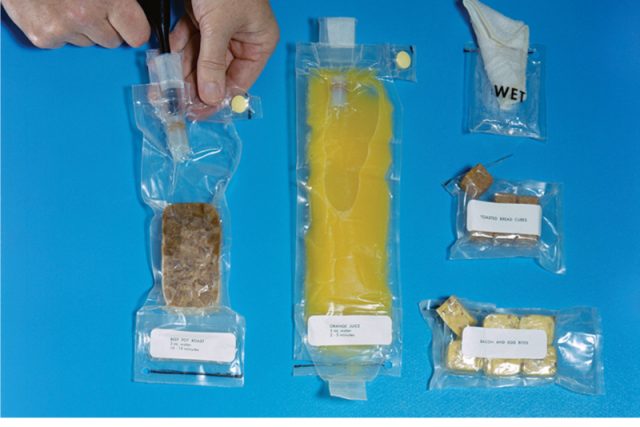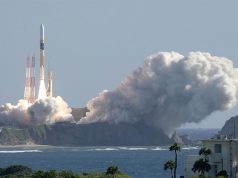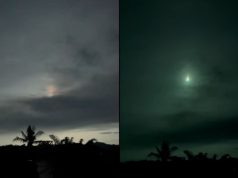Astronauts eat a special type of “freeze-dried” food to survive in space.
The Philippine Space Agency posted this explanation on social media more than a week after a lawmaker floated the idea of distributing “space food” to the poor this holiday season.
It was Rep. Rodante Marcoleta (Sagip party-list) who suggested giving “food pills” to alleviate hunger among the poor communities during the confirmation hearing of Renato Solidum Jr. as secretary of the Department of Science and Technology.
Marcoleta further made erroneous claims that astronauts eat these pills while they are in orbit in space and that these pills allowed them to spend a long time without eating food.
“[When] they [astronauts] are in orbit, they spend days, even months, without cooking their food. Kasi po wala, hindi naman [sila] pwedeng magluto doon sa kanilang spaceship, tama po ba?” he was quoted in a report as saying.
RELATED: Suggestions for a suggestion: Pinoys respond to lawmaker’s ‘food pill’ idea for the poor | Fact check: ‘Astronaut food’ na gusto ibigay ni Marcoleta sa mahihirap | Pilipino Star Ngayon
Freeze-drying food in space
In a post on December 21, the PhilSA explained that space food underwent a process called “freeze drying” for astronauts’ convenience while still maintaining their nutritional values.
Freeze drying is a method of preservation wherein food is dehydrated or vacuumed of its water content. Freeze-dried products normally have a longer shelf life.
While this technique is commonplace, the National Aeronautics and Space Administration (NASA) made advancements to it to make food suitable for astronauts in space missions.
“Pahirapan ang pagkain sa mga naunang space missions. Ang freeze-dried food na baon ng astronauts noon, bukod sa mahirap ihain at kainin sa spacecraft, hindi pa masarap,” the agency said.
“Dahil dito, muling pinag-aralan ng National Aeronautics and Space Administration (@NASA) ang freeze-drying para makagawa ng pagkain na may mahabang shelf life, kayang i-package nang magaan, at madaling ihanda habang napapanatili ang nutritional value,” it added.
Paano nga ba kumakain ang astronauts sa kalawakan?
Pahirapan ang pagkain sa mga naunang space missions. Ang freeze-dried food na baon ng astronauts noon, bukod sa mahirap ihain at kainin sa spacecraft, hindi pa masarap. pic.twitter.com/oCwYJWSkXy
— Philippine Space Agency (@PhilSpaceAgency) December 21, 2022
According to PhilSA, freeze-drying food takes eight to 24 hours and has to be done 20 to 100 times to complete.
It also emphasized that 99% of moisture from the food should be removed.
“Simple lang ang konsepto ng freeze drying pero ang proseso, umaabot sa 8 hanggang 24 na oras. Unang isinasalang ang pagkain sa napakababang temperatura bago ilagay sa isang vacuum chamber kung saan binababa ang presyon sa paligid ng pagkain,” PhilSA said.
“Kapag dinadagdagan ang init sa mababang presyon, ang water content ng pagkain ay direktang nagiging gas. Lahat ng water vapor ay sinisipsip palabas ng vacuum chamber, at uulitin ang proseso mula 20 hanggang 100 beses, hanggang higit sa 99% ng tubig ang naaalis sa pagkain,” it added.
Decades since this technique was developed, the International Space Station gained access to a refrigerator, a microwave and other appliances to store and prepare freeze-dried food.
“Not only does it help preserve nutritional value and extend shelf life, but removing the water also reduces the weight significantly, which is always an important consideration in space travel,” NASA said on its website.
It should also be noted that astronauts are ensured to eat three meals a day—breakfast lunch and dinner.
Nutritionists make sure that they are provided with a balanced supply of vitamins and minerals while traveling in space.
“Some foods can be eaten in their natural forms, such as brownies and fruit. Other foods require adding water, such as macaroni and cheese or spaghetti,” NASA said.
With the transfer of technology from NASA to a wider market, freeze-dried goods are now accessible in the market, including the Philippines.
These include pet treats, pet food and fruit chips.













